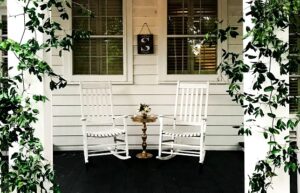Aging in Place vs. Senior Communities
Written By: Pam Foti – Vesta Senior Network

With the “graying of America,” a term that simply describes the fact that the median age of our population is increasing, we are now facing a new reality that will leave many of us concerned, confused and very possibly in crisis. For the first time in our history, we have a significant number of older adults living long enough to need care, and very possibly more care than can be provided by family or in the home. This reality creates a significant challenge for those of us in the Sandwich Generation, “sandwiched” in between aging parents who truly want to stay in their home and our own work and family obligations.
Fifteen thousand Americans are turning 65 every day.
Reading Recommendation: The Graying of America: More Older Adults Than Kids by 2035
You may remember a time when 65 seemed old. In fact, there were many people (my grandfather was one of them) who never even got to retire. They may have died from their first heart attack, stroke or bout with cancer before they were able to retire or soon after retirement. Today, things are very different and many of the people we are working with as Elder Care Consultants are well into their 80’s and 90’s. People are definitely living longer, and consequently more and more people need care. Unfortunately, most conversations regarding care needs stem from a healthcare crisis. In that crisis, decisions need to be made quickly, not allowing for much research and education about what is available. So, if most of us are going to need care at some point in our lives, how does someone determine where and how that care should be provided?
We often hear that our elders want to stay at home through the end of their lives. They want to “Age in Place”. But what does aging in place really mean? The US Centers for Disease Control & Prevention defines this as “the ability to live in one’s own home and community safely, independently and comfortably, regardless of age, income, or ability level.”
Let’s dissect that a little bit:
Safely
Although it may sound obvious, one key to staying at home safely is to prevent falls. More often than not, a decline in health and the ability to be safe at home independently and comfortably starts with a fall. Work on balance and strength. Take advantage of a senior exercise class that will help you work on that. Get regular eye exams and be very careful when prescriptions in your lenses are changed. Sometimes the new prescription can take some getting used to. Consult with your doctor and pharmacist regarding potential side effects or drug interactions of the medications you take that can have an impact on your balance. If you are going to make modifications to your home, such as grab bars, make sure that they are professionally installed! Don’t rely on something to help you as you lose your balance if it isn’t installed into a stud, for example.
Independently
Each person has to understand and define what independence means for them. I know one gentleman who has told his children that he will consider moving into a senior community once he is no longer safe to drive. To him, having the ability to get up and go wherever and whenever he wants is independence for him. For others, independence is being able to still care for the home to the level that they once were able. However, at some point, cleaning and caring for the yard, for example, may take so much energy that there is no time for the fun stuff. That may be the time when some people decide it’s time to pay someone to do those things, or simplify life by moving somewhere where all of those household items can be managed by others.
Comfortably
Another important consideration is what is comfort to any individual? Is comfort staying in the home that they have lived in for 40 or more years with the things they are accustomed to? Is comfort simplifying life by getting rid of things that maybe no longer serve them? Is comfort moving to a home that is easier to manage? Maybe that means no stairs, first floor laundry and people to help take care of the household chores. Ultimately, is someone comfortable asking for help? Is someone comfortable admitting that they may not be able to do the things they once could.
Financial Considerations
Another key consideration when it comes to aging in place is understanding what is sustainable long-term. People need to consider what will be sustainable from both a care perspective, as well as a financial perspective. Understanding what type of care can be provided in home and what the costs are is paramount to making a sustainable decision.
Commonly, people can afford to bring some care into the home on an “occasional” basis. This may look like a caregiver coming into the home 3 days a week for 4 hours a day. We were able to sustain my husband’s aunt in the home she grew up in for an entire year with this model. We hired a caregiver to come in who would take her to church, take her on errands and take her out for lunch a time or two a week. This allowed our aunt to be more accepting of the fact that she could no longer drive. The caregiver also did her laundry and helped her bathe. This helped to minimize the fall risk because she wasn’t going into the basement where her laundry was, and she wasn’t climbing into a tub alone. In addition, the caregiver prepared meals that were healthier than the frozen dinners that our aunt had been purchasing previously, so many needs were addressed in that 12 hours each week. This “occasional” in-home care is affordable for many people. It may cost approximately $17,000 a year and may be sustainable as long as that number of hours each week continues to address the important needs.
When an individual starts needing more than “occasional” care, the financial sustainability piece needs to be addressed. When someone needs constant supervision because memory may be becoming an issue, or when someone needs regular assistance toileting, it becomes important to evaluate all options and what makes the most sense for that individual and that family. Once someone starts needing someone with them around the clock, and the family needs to hire outside help, that cost skyrockets. Depending on the type of care someone needs, for example, if the caregiver can sleep through the night, or at least most of the night, or whether or not someone needs awake care around the clock, the costs can range from $100,000/year to $240,000/year. Keeping in mind that in addition to the cost of care, the individual will still have the regular costs of maintaining a home, buying groceries, etc.
Need for Assisted Living
When someone starts needing care or supervision around the clock, many families consider other options, such as assisted living. This can be a sound strategy that addresses the sustainability question of both cost and care. In an assisted living model, someone may have a 1 or 2 bedroom apartment with caregivers to help around the clock, have 3 meals prepared each day, and have all of their household expenses included in their monthly cost of care. Depending on the apartment and the care needs, these costs can range anywhere from $60,000/year to $90,000/year. It certainly isn’t cheap, but for some, it may be the most sustainable option.
One very important thing to consider is that today’s care model in assisted living ‘Ain’t Your Grandma’s Nursing Home Anymore’. Assisted living communities are being built at a record rate, and the new ones are frequently as nice as a new home that you might build.
Choosing Senior Communities
To back up a bit, when some people assess what independence, safety and comfort mean to them, they may choose to move into a senior community that will provide them all those things through the end of life. A common model in today’s senior living is to have independent apartments (and sometimes villas or garden homes), assisted living and memory care all on one campus. This will allow individuals to receive what they personally need as they age and possibly need care. Many times, this is a great option for a couple because in our experience, it is rare that two people ever need the same type of care as they age. We like to joke that like throughout our marriages, we each have our own strengths and weaknesses. “Honey, you take the pedals, I have the wheel.” And that is what we frequently see as couples age together. Having a safety net of assisted living for someone who may need more physical assistance, as well as for someone who may experience memory loss, is a good plan.
These communities definitely differ from one to the next. Some of these communities have a significant “endowment” or “entrance fee.” Others may have a rental deposit on the apartment that you would expect in any apartment situation. Those that have the higher “endowment” or “entrance fee” concept typically allow you to design your own space to some degree. In most instances, each apartment is remodeled or refurbished when the previous resident moves out. In many instances, these communities offer a specific palate of paint, countertops, cabinets, flooring, etc. as a package and include that in your entrance fee. They may also offer “upgrades” that you would pay for yourself. Maybe you prefer quartz over solid surface, or wood over laminate, stainless steel over black or white, and you are willing to pay for it. Great! In many situations, you have that option, just as if you were designing your own home.
At the end of the day, your choices are as unique as you are. Aging in place can mean something completely different to people. Maybe aging in place is staying at home with caregivers through the end of life. Maybe aging in place means moving into a senior community that will provide a safety net at each stage through the end of life.
Final Questions to Ask
Are there funds to support someone at home through the end of life? Will their care needs be able to be met in the home? Or, does it make the most sense to move into a community that can meet the most needs prior to a crisis?
How someone chooses to age in place really depends on what is sustainable to that individual and that family. The important thing to know is that by partnering with your team of financial advisors and by incorporating the knowledge and experience of an elder care consultant, you can gain the necessary information that you need to make a decision as to what will be best for you and your family.

